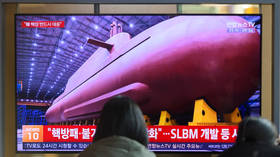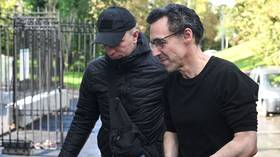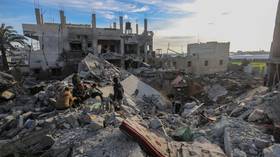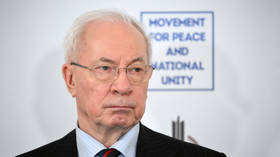The myth of Assad, ISIL and extremism

Who is to blame for the proliferation of extremist groups in Syria? The West often points a finger at Assad and his allies, but two secret US documents tell a different story.
It is difficult to find US officials directly claiming that Syrian President Bashar al-Assad is in league with the Islamic State of Iraq and the Levant (ISIL), but you will find plenty who will allude to it using specious reasoning:
US Secretary of State John Kerry is one of many who have sought to encourage this narrative:
“There is evidence that Assad has played footsie with them
(ISIL), and he has used them as a tool of weakening the
opposition. He never took on their headquarters, which were there
and obvious, and other assets that they have. So we have no
confidence that Assad is either capable of or willing to take on
ISIL.”
That logic forms the basis of several key arguments used by
Syria’s opponents to suggest a covert and symbiotic relationship
between the Syrian government and Islamist extremists. They go
something like this:
• Assad encouraged the growth of militants to create an either-or dilemma for Syrians who want him deposed, but who fear “what comes next.”
• Assad released militants from prison in 2011 so that they would overwhelm secular moderates.
• Proof of this is that the Syrian Army does not attack ISIL targets.
• Assad has a close history with militants – he sent hundreds over the border into Iraq to join the insurgency against US forces and is now suffering blowback.
But as a global confrontation with ISIL mounts, an entirely different picture has begun to emerge. The US-led coalition's five Arab Sunni partners are providing little less than fig-leaf cover for airstrike operations. NATO has been unable to wrest - to date - a commitment from Turkey to enforce serious border security to stop militants from crossing over into Iraq and Syria. In recent weeks, Western media has unleashed a flurry of articles pointing to Qatar's role in funding extremists.
Clearly, America's Sunni Arab and Turkish allies are approaching the “ISIL Project”' with something less than enthusiasm.
On Thursday, US Vice President Joe Biden let the cat out of the bag. During a speech at Harvard University, Biden told his audience:
"Our allies in the region were our largest problem in Syria. The Turks...the Saudis, the Emiratis, etc. What were they doing? They were so determined to take down Assad and essentially have a proxy Sunni-Shia war, what did they do? They poured hundreds of millions of dollars and tens, thousands of tons of weapons into anyone who would fight against Assad except that the people who were being supplied were al Nusra and al Qaeda and the extremist elements of jihadis coming from other parts of the world….we could not convince our colleagues to stop supplying them."
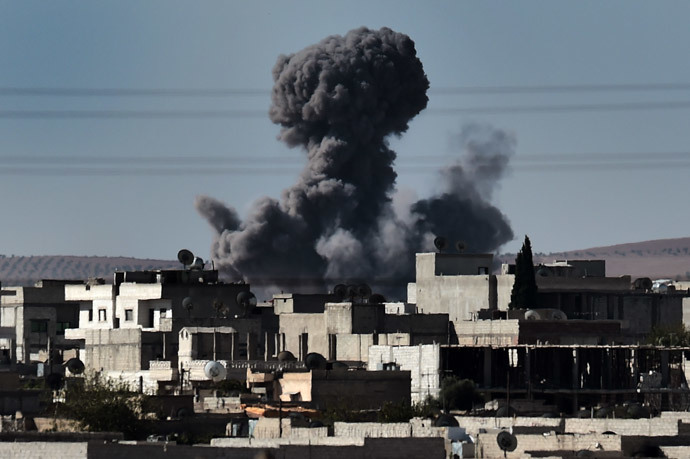
He, of course, failed to mention Washington's own arming, training and funding activities coordinated with these very same allies. Predictably, Biden was forced to “apologize” for his undiplomatic comments over the weekend.
But just last month, during a hearing in the US Senate for Chairman of the Joint Chiefs of Staff General Martin Dempsey, Senator Lindsey Graham asked: “Do you know of any major Arab ally that embraces ISIL?”
To the surprise of many, Dempsey countered: “I know of major Arab allies who fund them.”
The revelations keep flowing from once tight-lipped Western sources. According to US news reports, current and former officials now say wealthy Gulf donors are the source of early funding:
“These rich individuals have long served as ‘angel investors’ for the most violent militants in the region, providing the ‘seed money’ that helped launch ISIS and other jihadi groups…Former U.S. Navy Admiral and NATO Supreme Commander James Stavridis says the cash flow from private donors is significant now and was even more significant in the early fund-raising done by ISIS and al Qaeda’s affiliate in Syria, the al-Nusra Front,” NBC’s Robert Windrem wrote in an article.
And on Saturday, the UK's former Assistant Chief of the Defense
Staff General Jonathan Shaw, who specialized in counter-terrorism
and security policy and retired in 2012, told The Telegraph:
"This is a time bomb that, under the guise of education,
Wahhabi Salafism is igniting under the world really. And it is
funded by Saudi and Qatari money and that must stop."
The ‘Assad-has-encouraged-extremism’ argument
Has the Syrian government exploited extremism while at the same time fighting a three-year nationwide military campaign to thwart it? Perhaps. Politics are opportunistic by nature.
But the narrative about Assad encouraging Islamist militancy has always failed to note the historic role of armed Islamists in Syrian “rebellions.”
A US Defense Intelligence Agency (DIA) document that was declassified in 2012 provides a starkly different reading of events leading up to the controversial “Hama massacre” of 1982. It tells a story remarkably similar to events in Syria beginning in early 2011. Here is a montage of quotes from the document:
“In early 1979, encouraged by the Islamic Revolution in Iran, the Syrian Muslim Brotherhood developed a plan to trigger a similar popular revolution in Syria to oust (Hafez) Assad. Themassacreof 50 Alawite cadets, on 16 June 1979 at the Artillery School in Aleppo, signaled the start of the MB offensive.”
The Syrian MB regroups for a “new round of fighting” in late 1980, announces the formation of an “Islamic Front”’ and increases cooperation with the Sunni (Baathist) government of Iraq which had helped the MB covertly in 1979-80 to oust Assad.
“The plan, apparently developed by the leadership of the Syrian MB and probably coordinated with Iraq, centered on two complementary actions. The first was a full-scale revolt by the city of Hama, a traditional Brotherhood stronghold and the location of its covert headquarters in Syria. Once this rebellion was unleashed, similar uprisings were to take place in Aleppo, Damascus and other major cities, accompanied by a general strike designed to paralyze Syria...”
“Simultaneously, a sophisticated worldwide propaganda campaign was to be launched supporting the rebellion and emphasizing its victories and the wholesale desertion of Army units to the rebel side. Press releases were to be made in Europe and the US, while propaganda broadcasts against Syria were to be carried by the Phalange-controlled Voice of Lebanon and the Iraqi-controlled Voice of Arab Syria.”
“At least 100 militants were transported from Jordan, where they had taken refuge, into Iraq where they probably received training prior to their movement into Syria... Sometime after this, the infiltration of ‘Secret Apparatus’ militants began from staging areas in Iraq, and to a lesser degree from Turkey, where others had fled. During the interim period, a number of terrorist bombings and shootings took place in Syria to demonstrate the Brotherhood/dissident Alawites ability to strike at the government.”
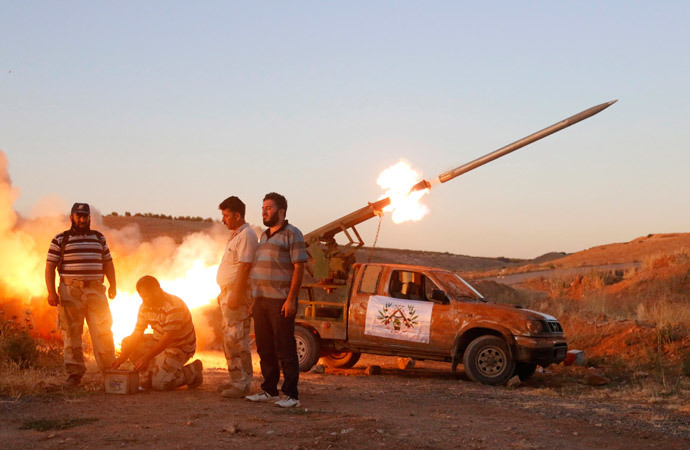
“As a result of Syrian security actions, the MB was forced to prematurely unleash the Hama rebellion with the hope that it might spark widespread fighting in other cities…The rebellion would also force the Damascus government to become even more oppressive. The Brotherhood leadership believed this would, in turn, cause greater alienation of the Assad government from the Sunni Muslim majority and within the Alawite community.”
“On February 2, following a clash between the MB and Syrian security forces, the loudspeakers atop the mosque minarets in Hama called on the people to begin a Jihad (Holy Struggle) against the government. The appeal also told the people that arms were available at specified mosques. At about the same time, teams of the MB’s ‘Secret Apparatus,’ some in army uniforms, moved to attack preselected government targets in the city.”
“Despite the propaganda reporting, the uprising in Syria had never spread outside of Hama, although some limited bombings had taken place in Damascus and elsewhere… The total casualties for the Hama incident probably number about 2,000. This includes an estimated 300-400 of the Muslim Brotherhood’s elite ‘Secret Apparatus’… The Syrian dissidents’ modus operandi will continue to be terrorism, particularly bombings and assassinations.”
WikiLeaks: Syria’s government and terrorism
On February 24, 2010, a Cable classified as ‘Secret’ was dispatched from the US Embassy in Damascus to the CIA, DIA, National Security Council, Joint Chiefs of Staff, Office of Homeland Security and a smattering of key US embassies in the Middle East and Europe.
It details the communications between Syria’s General Intelligence Director (GID) Ali Mamlouk who dropped in on a meeting between Syria’s Vice Foreign Minister Faisal al-Miqdad and a US delegation, headed by State Department Coordinator for Counterterrorism Daniel Benjamin.
The participants discuss possible future security and intelligence cooperation on issues related to terrorism, particularly on the Syria-Iraq border.
What is notable about this US-framed communiqué is that the American delegation does not take any of the Syrian officials in the room to task for “encouraging and coordinating” the passage of extremist fighters from Syria into Iraq to participate in an insurgency against US forces. This accusation has become a key narrative advanced by Washington in recent years, so why not challenge the Syrians face-to-face when the opportunity is there?
According to the Cable, Benjamin says “the two countries should still work to cooperate on immediate threats facing both the U.S. and Syria, including the proliferation of takfiri groups in the region, such as al-Qaeda, and stopping the flow of foreign fighters into Iraq.”
The Syrian response? According to the US Cable:
“Mamlouk said the foreign fighters come from a large number of Arab and Muslim countries and that the Syrians detain ‘large numbers plus their local facilitators.’ As an example, Mamlouk said he handed over 23 Saudis detained in Syria to Saudi Prince Muqrin last year.”
The US delegation even acknowledges the fact that the Syrians have been helpful:
“Benjamin commended Mamlouk on reducing the flow of foreign fighters, while encouraging further progress.”
And the Syrians offer additional cooperation, provided that Damascus takes the lead in these efforts:
“Miqdad interjected that the issue of foreign fighters using Syrian soil is a matter of national security for Syria. ‘We have zero tolerance,’ he said. Miqdad said Syria needs the cooperation of other countries, namely those from which the terrorists are coming. ‘If we can close this circle - with us, you, and other countries - we will succeed,’ he concluded.”
The Cable does reveal some interesting information about Syrian strategies in dealing with terrorism, which Mamlouk says differs considerably from the American approach:
"The GID Director said Syria had been more successful than the U.S. and other countries in the region in fighting terrorist groups because ‘we are practical and not theoretical.’ He stated Syria's success is due to its penetration of terrorist groups. ‘In principle, we don't attack or kill them immediately. Instead, we embed ourselves in them and only at the opportune moment do we move.’ Describing the process of planting embeds in terrorist organizations as ‘complex,’ Mamlouk said the result had yielded been the detention of scores of terrorists, stamping out terror cells, and stopping hundreds of terrorists from entering Iraq.
Mamlouk acknowledged some terrorists were still slipping into Iraq from Syria. ‘By all means we will continue to do all this, but if we start cooperation with you it will lead to better results and we can better protect our interests,’ he concluded.”
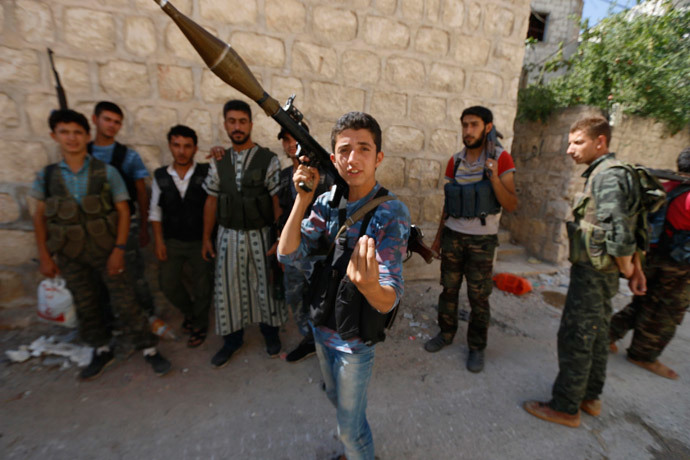
War of words
The tactics described by Mamlouk explain, in part, why Syrian forces today do not typically launch assaults on terrorist groups unless there is an immediate and direct threat to its military strategy of maintaining control over key areas and disrupting rebel supply lines.
While groups like ISIL are viewed as a security threat, they have not always posed an imminent one.
For the better part of the Syrian conflict, ISIL has not controlled the “priority zones” of the Syrian Army.
Those areas have always been Damascus, Aleppo, Homs, Hama and their surrounding countryside (Rif), with Quseir and Qalamoun, Daraa, Tal Kalakh and other border towns playing an important role. When ISIL fighters have been present in those areas, the Syrian Army has fought them - as in Qalamoun and the Damascus suburbs.
In early 2014, pro-opposition writer and researcher A.J. Tamimi questioned in detail accusations of collaboration between the Syrian government and ISIL/al Nusra. Among his many points, Tamimi notes:
“One must ask what the regime would gain strategically by constantly bombing ISIS strongholds in Raqqa province, or ISIS strongholds elsewhere, for that matter, located far beyond the frontlines. As in the wider east of Syria, the regime lacks ground forces to launch an offensive to retake any territory in Raqqa province, and must depend on airlifts from elsewhere to maintain its remaining airbases. Hence, the regime is focusing its airstrikes where it has some real expectations of advancing: most notably in Aleppo city.”
Nevertheless, the Syrian air force did take immediate action when ISIL escalated in Mosul in June, which changed the geopolitical dynamic well beyond the Syrian-Iraqi border. Kerry is misleading when he suggests that Assad will not strike ISIL headquarters: this is about timing and gains from both a military and political perspective – not necessarily a response that trigger-happy Americans can understand.
As for accusations that the Syrians have released militants from their prisons to “populate” ideologically extremist rebel groups that will make Assad look like an angel… You can’t have it both ways – political prisoner releases were initiated to defuse conflict and demonstrate leniency. Were some of these prisoners “extremists” of the variety that man Islamist rebel groups? Almost certainly. But that was the Sunni constituency that the Syrian government was also trying to placate in the early days.
Even today, after grueling “reconciliation” negotiations, the Syrian government is allowing these very rebels to “go free” after they lay down their arms – this, according to volunteers involved in negotiations from Homs to Rif Damascus. What is to stop these same “reformed rebels” from hopping over to al-Raqqa and taking up bigger arms? Should the Syrian government kill them instead? How does one win in a situation like this?
Critics of Syria's prisoner releases should be reminded of the “Big One” carried out by the Americans in 2009 when they allegedly freed future ISIL ‘Caliph’ Abu Bakr al-Baghdadi from an Iraqi prison.
Does anyone have the right to point fingers after that monumental gaff? The fact is – from Saudi Arabia to Qatar, from Turkey to the United States, from Iraq to France – there appears to be plenty of complicity in fueling ISIL and the jihadi phenomenon. Is Syria complicit too? It depends who is asking - and why.
The statements, views and opinions expressed in this column are solely those of the author and do not necessarily represent those of RT.
The statements, views and opinions expressed in this column are solely those of the author and do not necessarily represent those of RT.




